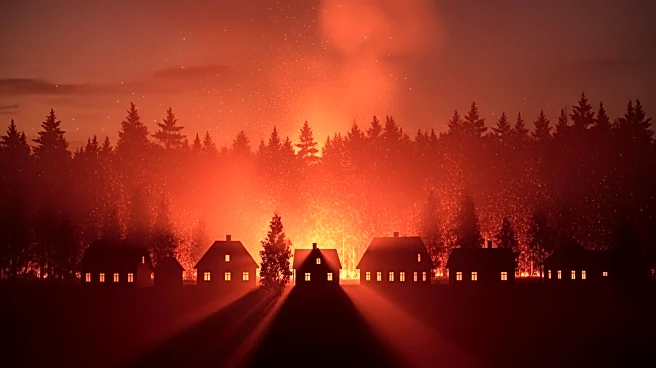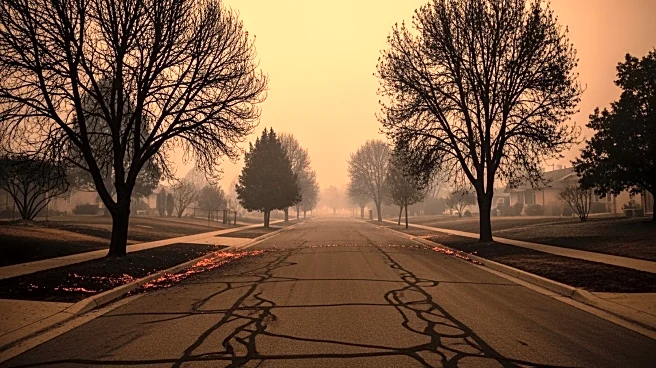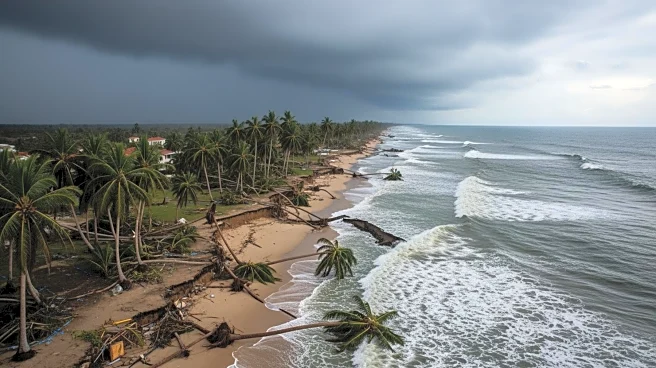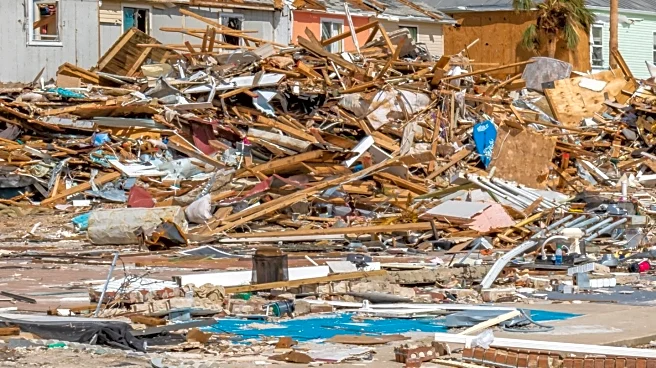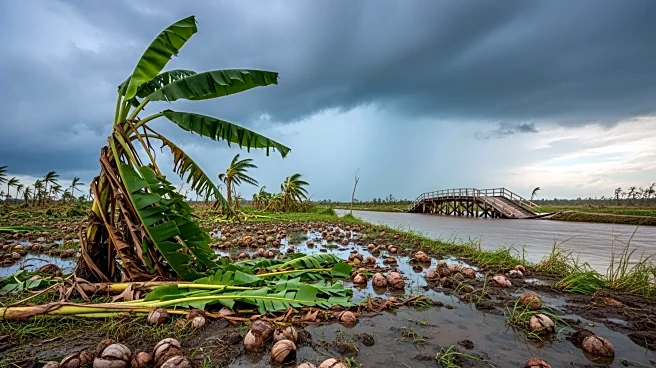What's Happening?
A devastating fire in Oita, Japan, has led to the destruction of at least 170 homes and the evacuation of over 170 residents. The fire began near a fishing port on the southern main island of Kyushu during
strong winds and quickly spread to a nearby forest, affecting approximately 4.9 hectares. More than 200 firefighters and several fire engines have been deployed to control the blaze, with assistance from two UH1 army helicopters. The fire has resulted in one fatality and one injury, with authorities still investigating the cause and spread of the fire.
Why It's Important?
This incident underscores the challenges faced by communities in disaster-prone areas, particularly in terms of emergency response and infrastructure resilience. The rapid spread of the fire highlights the need for effective fire prevention and control measures, especially in regions susceptible to strong winds. The Japanese government's commitment to providing support to affected residents reflects the importance of governmental intervention in disaster recovery efforts. The event may also prompt discussions on improving safety standards and preparedness strategies in vulnerable areas.
What's Next?
Efforts to control the fire and restore electricity to the affected homes are ongoing, with about 260 homes still without power. The investigation into the fire's cause and spread is expected to continue, potentially leading to changes in fire safety regulations and disaster preparedness protocols. The government is likely to focus on providing aid to displaced residents and facilitating rebuilding efforts in the affected area.
Beyond the Headlines
The fire in Oita may lead to increased awareness of the risks associated with living in coastal and forested areas, particularly in terms of fire safety and disaster preparedness. It could also spark discussions on the impact of climate-related factors, such as strong winds, on the frequency and severity of such events. The incident may drive efforts to enhance infrastructure and emergency response systems to better protect vulnerable communities.
